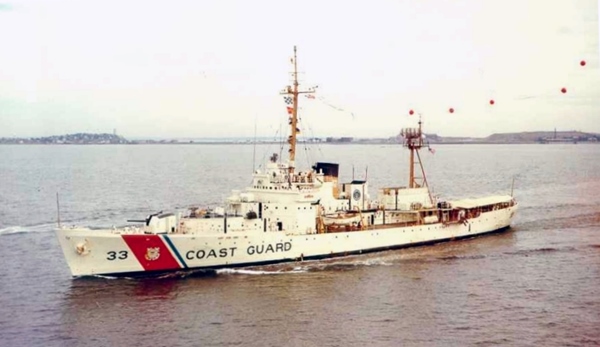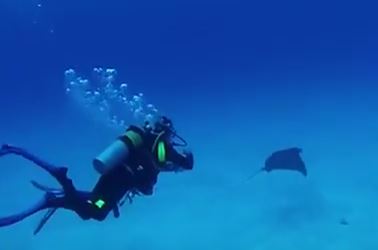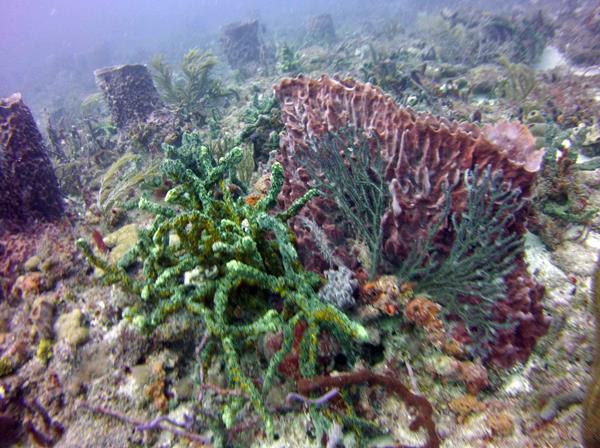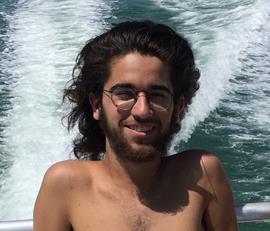![]()
- Annual Picnic
- ADA Is Now a Non-Profit
- Bahamas Out Islands: You Can Still Discover Rarely Dived Sites
- Diving by the Numbers
- ADA Creates New Conservation Projects Committee
- The Duane and the Bibb
- Some Visual Memories of Cayman Brac
- Peanut Island
- New Dive Operator in Boynton Beach
- Surface Signals – Audibles
- 1st Annual ADA Youth CRF Scholarship
- Extending Your Bottom Time Safely
- Do Crabs Have Teeth?
- Oldest Certified Diver on Record
- Newsletter Delivery Options
- Email or Address Change?
- T-Shirts For Sale
- ADA Guidelines and Policies
When: Saturday, Oct 8, 2016
Who: ADA members, prospective members, family and friends.
Where: Dr. Von D. Mizell-Eula Johnson State Park (formerly known as John U. Lloyd Beach State Park), Jetty Pavillion, 6503 N. Ocean Drive, Dania Beach, Florida 33004 1.5 miles north of Sheridan St. on A1A
Time: Park opens at 8:00 AM. Meet for beach dive at 9:00 AM, BBQ at noon.
MUST BE PRESENT TO WIN RAFFLE PRIZES. MUST RSVP TO WIN PRIZES.
Bring Your Dive gear for Sale or Swap!!

Call or email Lon at 305-251-4975 or lon@diverlon.com to sign up, deadline October 5th for RSVP. For beach diving, bring all your own gear and a dive flag if you have one. Bring lobster gear as this is a great lobster spot. Bring that license too, the FWC seem to find this as one of their favorite hang outs. Or if you made it to 65+, no license is needed. The reef is about 100 yards off shore. It’s a great surface swim out. That is your warning. Or dive in close and enjoy the reef. The pavilion has covered shelter, very nice bathroom, showers, and changing room. We will have the BBQ and raffle, rain or shine, unless a hurricane threatens. BBQ will include burgers, dogs, chicken, extras and all drinks. A small fee is charged to enter the park ($4 for single occupancy vehicles, $6 for 2-8 persons per vehicle), free parking at the pavilion. Non-ADA members and non-family members may attend but will be asked to contribute $10 for the BBQ. They may also dive, but are not part of the ADA dive group and not eligible for prizes
![]()
Active Divers Association Is Now a Non-Profit
--by Lenora Bach, Esq.
We are pleased to announce that Active Divers Association is now a non-profit tax exempt 501(c)(3) organization. We were approved as a public charity by the IRS on June 15, 2016. We are excited about the opportunity that this brings for continued support of our organization. Our new Mission Statement is posted on the website.
Our Mission
The Active Divers Association is a non-profit corporation dedicated to ocean stewardship and the preservation of our underwater environment. Comprised primarily of scuba divers, the Active Divers Association educates the community, through outreach and programs, about the local underwater ecosystem.
The corporation provides a means by which divers can be more involved in scuba activities, while they also become attuned to the plight the ocean currently faces by:
- Educating and promoting the sport and science of scuba and skin diving awareness in a safe environment.
- Educating the general public about the importance of protection and preservation of coral reefs and the marine environment in South Florida.
- Organizing scuba diving trips for members and other concerned persons, in order to study and learn about issues pertaining to ocean stewardship and preservation of the underwater environment.
Our interests focus toward the environment as we enjoy seeing, and interacting with, marine life while diving. As people who directly view the environment under the surface, Active Divers are uniquely situated to know the state of our oceans health....., and try to do something about it. As a group we advocate for the underwater ecosystem.
![]()
Bahamas Out Islands: You Can Still Discover Rarely Dived Sites
 As we submerged in the
air-clear water off Cat Island in the eastern Bahamas, we
spotted the divemaster beckoning for us to follow him. He
disappeared headfirst down a yard-wide vertical hole in
the top of the coral reef. We looked at one another,
shrugged, and finally we all nervously followed him down.
The tunnel through the reef was home to some of the most
vivid colors and critters we had ever seen. Crabs and fish
nestled in the crevices. Crinoids of many hues and
textures curled out from the sides of the passage. We kept
heading down, 70-80-90 feet. When we hit 100 feet, we swam
straight ahead through a royal blue sea window in the
wall, framed by a massive outcropping of black coral. We
felt like pioneers, realizing that not many people, if
any, had ever been there before us.
As we submerged in the
air-clear water off Cat Island in the eastern Bahamas, we
spotted the divemaster beckoning for us to follow him. He
disappeared headfirst down a yard-wide vertical hole in
the top of the coral reef. We looked at one another,
shrugged, and finally we all nervously followed him down.
The tunnel through the reef was home to some of the most
vivid colors and critters we had ever seen. Crabs and fish
nestled in the crevices. Crinoids of many hues and
textures curled out from the sides of the passage. We kept
heading down, 70-80-90 feet. When we hit 100 feet, we swam
straight ahead through a royal blue sea window in the
wall, framed by a massive outcropping of black coral. We
felt like pioneers, realizing that not many people, if
any, had ever been there before us.
We were in the Bahamas Out Islands, doing what some call Discovery Diving. Some of the remote islands have so many healthy coral formations and so few dive operators that you can explore places that divers may have never before seen. You spend the hour between dives anchored on an otherwise deserted crescent beach, snorkeling and exploring.
A lifetime link with the Bahamas, including living and working in Nassau as a newspaper reporter and college journalism teacher for seven years, has afforded me the rare opportunity of having access to diving all over the Bahamas for the past 28 years. More recently, magazine assignments have drawn me back to the various dive resorts in the Out Islands to dive and relax.
![]()

Scuba is a sport of numbers: How deep did you go, how long were you down, how much air do you have left, what’s your Nitrox percentage, what’s your compass setting? The list goes on and on. These are easy numbers to attain. A diver merely has to view his console to get a complete readout of almost any metric needed. Now, ask how many people scuba dive, and you are likely to get as many answers as people you ask.
Scuba as we know the sport today, has been around for nearly 65 years since Jacques Cousteau and Emil Gaugin invented the first demand regulator and took it underwater. Since then, the sport has grown in popularity thanks largely to TV shows like “Sea Hunt” and “The Undersea World of Jacques Cousteau”. Yet, the number of divers actively pursuing the sport has remained static for many years.
The number of active divers is vitally important to the industry in many ways. Certifying agencies need to understand how many new divers can be brought into the fold, and how many of those new divers will progress beyond the Open Water certification. Manufacturers and retailers live and die by the number of new divers certified each year and the volume of replacement equipment existing divers purchase. Resort and dive boat operators depend on people actually going out to dive
![]()
As the ADA’s Conservation Projects Director, it is my honor and pleasure to announce the creation of our club’s new “Conservation Projects Committee.” If you have an interest in preserving and restoring the marine environment, this committee will provide a framework for you to put your ideas into motion, with the assistance of other ADA members. As everyone should know, the ADA has been busy for several years with conservation-related programs and projects. We need your ideas and input to identify more such opportunities to clean up the ocean and have fun doing it. Some areas of possible action include trash removal from dive sites, deployment of mooring buoys to reduce anchor damage, and extraction of derelict lobster traps that entrap and kill marine life.
 Our club’s largest
and most longstanding contribution to the marine ecosystem
has been our work with the Coral Restoration Foundation.
Since 2008, ADA has participated in numerous coral
transplanting projects, tended the baby coral nursery
developed by CRF, and attended classroom training to learn
about the causes of coral degradation and how to reverse
the damage to our Florida reefs. This year’s CRF divers
were Ellen Siegel, Mary LeCraw, Don Moss and John Moss
from St. Louis, Lenora Bach, Clark Stephens, and youth
members Joshua Escalona and Juliana Bach. As an aside I
will note that we have decided to make permanent an annual
scholarship program to encourage youth participation in
the CRF programs in future years.
Our club’s largest
and most longstanding contribution to the marine ecosystem
has been our work with the Coral Restoration Foundation.
Since 2008, ADA has participated in numerous coral
transplanting projects, tended the baby coral nursery
developed by CRF, and attended classroom training to learn
about the causes of coral degradation and how to reverse
the damage to our Florida reefs. This year’s CRF divers
were Ellen Siegel, Mary LeCraw, Don Moss and John Moss
from St. Louis, Lenora Bach, Clark Stephens, and youth
members Joshua Escalona and Juliana Bach. As an aside I
will note that we have decided to make permanent an annual
scholarship program to encourage youth participation in
the CRF programs in future years.
Because we know that our CRF divers already have an interest in conservation projects, this article will serve to announce that all eight of our 2016 CRF participants are invited to be the Founding Members of the new Conservation Projects Committee. Unless you contact me to opt-out of membership, as the committee’s inaugural chair I will consider that you have accepted and include you on correspondence related to planning our agenda and developing our plans to submit to the ADA board for consideration.
Finally, all ADA members are invited to join the committee as regular members, and to submit your ideas for marine conservation projects. Please let me know of your interest and ideas by emailing me at roy@wassonandassociates.com Let’s all work together to preserve and restore our marine environment for ourselves and those who follow us beneath the waves.
![]()
In the 1930’s the Duane & Bibb formed part of the Coast Guard seven vessel fleet. The vessels were assigned to the new and elite “Search and Rescue Coast Guard Unit.”

The Duane - Circa 1968
When the ships’ end of duty approached, they captured the attention of “Keys Association of Dive Operators” that were searching for historical ships to be used as artificial reefs off Key Largo. On November 27, 1987, after $160,000 and two years of preparation the Duane was sunk, followed by the Bibb a day later. The ships final resting places are in close proximity to each other.
The deliberate sinking of the Duane and Bibb Vessels has been an ecological and recreational success. The 327-foot Duane rests on a sandy bottom at 120 foot depth, approximately one mile south of Molasses Reef (N2459.380 & W8022.920). The Duane was named after the Secretary of the Treasury Willian J. Duane who served under President Andrew Jackson. In 1937, the Duane was initially assigned to patrol the California coast and eventually was relocated to patrol the east coast. The Duane accomplished numerous WWII wartime rescues, including rescuing survivors from the merchant ship Tresillian, torpedoed by a German U-boat. She was also part of the Coastal Surveillance Force in Vietnam.
![]()
I was lucky enough to get a gift of a GoPro Hero at my retirement party and it started a new hobby (like I need more!!) doing underwater videos. After many trial and error episodes I learned that if I did not leave the camera on at all times I would miss the most amazing parts of a dive. I also learned that no one would look at a ten-minute video so I simply started to do two minute videos.

Sometimes you get surprised by seemingly inanimate objects like a barrel sponge, but if you watched this video: Sponge. you would see what I have only seen twice in 25 years - a spawning sponge.
All of us would love to find a way to deal with the invasive lionfish. What if we simply got all the yellowtail Snappers to do what you will see in this video:Lionfish and then we would also have more snapper to eat - a true win win!!
And none of this would be possible if we did not have the support of a great staff at Reef Divers in Cayman Brac. They had their own version of service they call “Valet Diving” and quite honestly we were all spoiled after a few dives. Check out the video: Valet Diving . You may have to turn up the volume a bit on this one, but the visual says it all.
Happy viewing!!
![]()
 Have you even heard of
this place? Well, maybe not, it is not well known and
until lately very shabby. In fact it was just sitting
there collecting garbage. That has been cleaned up and
it is now a beautiful spot. Camping is available also,
when it is not flooded.
Have you even heard of
this place? Well, maybe not, it is not well known and
until lately very shabby. In fact it was just sitting
there collecting garbage. That has been cleaned up and
it is now a beautiful spot. Camping is available also,
when it is not flooded.
The location is directly across from Phil Foster State park in Riviera beach off of Blue Heron Blvd. exit from I95. Just head east.
It is at the north tip of Palm Beach barrier Island. If you know your history you would know that the Kennedy’s had a place located there. Well, during the Cuban missile crises the Government built a nuclear bomb shelter on the island for Kennedy’s use. Just in case. The rest of ue would have to do for ourselves as usual. Yes, it is open for tours
It is 80 acres of pure Palm Beach beauty, now that it has been refurbished from the teenagers. It has a place for picnics, swimming, snorkeling and nature walks and the all important bathrooms. Since it is an island you do need to catch an independent ferry to get across to it.
![]()

On Saturday September 3rd, we checked out a new diver operator, Splashdown Divers in Boynton Beach. Take I-95 North, get off at Boynton Beach Blvd and go east a couple of miles just past Federal Highway and you’re there. Surrounded by a relatively new condominium complex, the marina is just behind it, with a restaurant at the end. You drop off your gear at the boat, slip 13, and the boatmate takes the gear and watches it while you park your car in the covered parking at the condo. He loaded it on the boat too. (at least that’s how it worked for me today). The first 2 floors at the condo parking are public free parking. Check-in at the Splashdown office, which is in a storefront just outside of the parking lot. There is some basic dive gear available, and you can get a bite to eat there too. The boat is a few steps away, at the marina. The boat is old, but reasonably comfortable. It’s not a Newton, but has a wide deck
Divers on the surface need to be located quickly to avoid boat collisions and receive rescue and first aid. Audible signals, along with visual signals, are very effective under most sport diving conditions. There are several types of mechanical devices which product a loud alert. The first is named the Dive Alert, appropriately enough. It uses compressed air from the scuba tank and is for above water use only. The Dive Alert plus can be used above and below water to signal your buddy. Both attach to the BCD low pressure inflator hose. The effective distance is reportedly one mile.

A low tech device, required by ADA, is the whistle. They come in many colors and types, but all require a healthy burst of air from the divers lungs. Effective distance is probably about 1/4 mile. And of course,
yelling and screaming would be the last resort. Effective range maybe about 100 yards. Very high-tech signaling devices include a waterproof VHF radio which allows voice communications with other radios on the same frequency, and some have a GPS locator beacon.
In summary, every diver needs some type of signal devise when on the surface. I carry the safety sausage, Dive Alert, whistle, and mirror. When I’m in the water, I want EVERYONE to know where I am.
![]()
 Meet Joshua
Escalona. He is a 16 years old Senior attending Mast
Academy. Joshua is an Advanced Open Water Diver with a
Nitrox certification. He joined ADA this year as part of
the Youth Program and plans to pursue a career in the
medical field.
Meet Joshua
Escalona. He is a 16 years old Senior attending Mast
Academy. Joshua is an Advanced Open Water Diver with a
Nitrox certification. He joined ADA this year as part of
the Youth Program and plans to pursue a career in the
medical field.
The ADA Youth Coral Restoration Foundation Scholarship is administered and funded by the Active Divers Association and is awarded to divers in our youth program interested in learning how they can make a difference to better our oceans.
Extending Your Bottom Time Safely
When we go diving we all want the longest bottom time possible. And, as members of ADA we are going to do this in the safest way possible. One does not have to sacrifice safety in order to increase bottom time. In fact, there are several ways that we can make our dives longer and not put ourselves at risk.
Nitrox is one of the best ways to extend our bottom time. Nitrox allows divers to have a higher concentration of oxygen in the tank, so that a diver can stay down longer. The only disadvantage to nitrox is that there are depth limits that are usually shallower than the typical diver who is on air. So, one has to be very careful to not exceed the depth limit that each percentage of oxygen allows. But, what nitrox DOES give is longer bottom time. And, frankly I am willing to sacrifice a little depth for a longer dive!
![]()
Crabs aren’t picky eaters. As an omnivore, a crab enjoys both plants and animals, but its main source of sustenance is algae. However, crabs don’t chew their food in their mouths. This chore is handled by the crab’s stomach, which contains exoskeleton materials shaped like teeth that grind together to mash up the food in a section of the stomach called the gastric mill.
A crab uses strong claws to tear apart its food, while its mandibles (or mouth parts) shred the food a bit more, before sending it all along to the digestive tract.
Down the hatch:
- A typical crab diet includes worms, molluscs (such as snails and slugs), fungi, other crustaceans (including shrimp and barnacles), and often any dead organic matter that happens to float by.
- Birds have a similar mechanism to process food; they use the gizzard to break up food. They also swallow stones and sand to help the gizzard do its grinding.
- Examples of other animals that use a gastric mill or gizzard: earthworms, crocodiles, alligators, lobsters, crayfish, barnacles, and krill.
Show your pride in the best dive club anywhere! Sizes small, medium, large, xlarge, xxlarge. Some tank tops available also. All shirts are $10 each.
CALL LON AT 305-251-4975 AND PLACE YOUR ORDER TODAY!. Lon will deliver it to you on your next dive

Oldest Certified Diver on Record
The title of oldest certified diver goes to 93 year old Ray Wooley. He celebrated his 93rd birthday on August 28 by completing his 9th dive of the year. He completed 20 dives in his 92nd year, and has set a goal of 39 dives for his 93rd year. He is a member of the British Sub-Aqua Club has completed thousands of dives around the world since he took up the sport. Read more about his amazing life by clicking here.
![]()
Want your newsletter delivered via snail-mail? Contact the webmaster and request a printed copy. Be sure to put "ADA Newsletter" in the subject.
![]()
If so, please email or call us with your current information. you may send an email to: Dr. Dan Baeza, Membership Chair at dmbaeza@bellsouth.net. You can also call Dan at 954-260-8225 and leave a message with your new contact information.